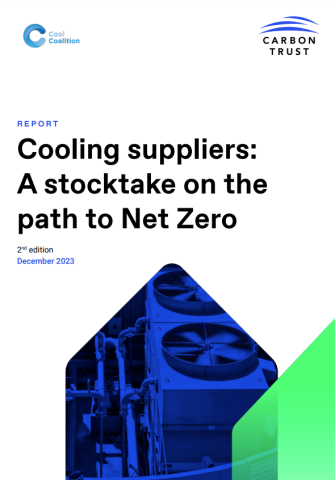Key findings:
- The cooling industry is mobilising to tackle climate change. A majority of the fifty-five suppliers tracked in this report responded strongly to the call made at COP26 to act on climate and race to zero. Today three-quarters of the suppliers now have climate programmes to transform the products and services they offer whilst reducing their own climate impacts.
- Cooling suppliers who have created net zero climate momentum share three characteristics:
(i) they’ve set ambitious, independently verified climate targets for 2030 and 2050,
(ii) are actively collaborating, cooperating and communicating to support the cooling industry’s climate transition, and
(iii) are using green finance to fund climate transformation across their business operations (e.g., retooling factories to create efficient products that use ultras-low GWP refrigerants). - Cooling suppliers can cooperate to accelerate Net Zero technology development. Delivering Net Zero cooling requires accelerated research and development at a pace greater than typically achieved by academia or the industry ecosystem, affording each cooling supplier a heavy innovation burden. Cooperation on 'ancillary' science, technology, processes and supply chains would reduce this burden and accelerate Net Zero technology.


